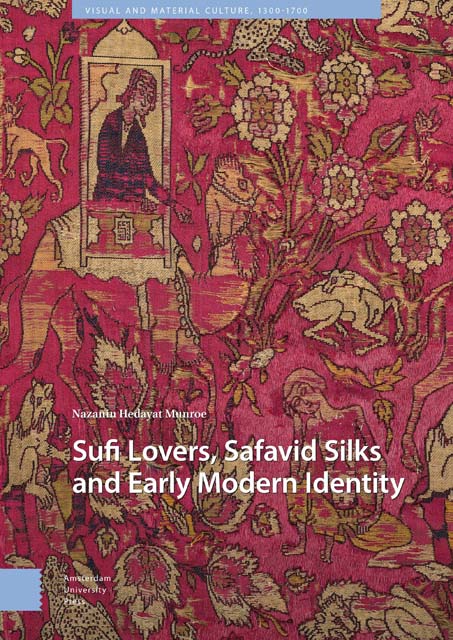Book contents
- Frontmatter
- Dedication
- Table of Contents
- Acknowledgments
- List of Illustrations
- Note on Transliteration
- Introduction: Material Culture and Mysticism in the Persianate World
- Part I
- Part II
- Conclusion
- Appendix A List of Khamsa Silks
- Appendix B Summary of ‘Shirin and Khusrau’ by Amir Khusrau Dihlavi
- Appendix C Summary of ‘Majnun and Layla’ by Amir Khusrau Dihlavi
- Glossary of Textile Terms
- Glossary of Persian and Arabic Terms
- List of Historic Figures
- Index
Conclusion
Published online by Cambridge University Press: 19 April 2023
- Frontmatter
- Dedication
- Table of Contents
- Acknowledgments
- List of Illustrations
- Note on Transliteration
- Introduction: Material Culture and Mysticism in the Persianate World
- Part I
- Part II
- Conclusion
- Appendix A List of Khamsa Silks
- Appendix B Summary of ‘Shirin and Khusrau’ by Amir Khusrau Dihlavi
- Appendix C Summary of ‘Majnun and Layla’ by Amir Khusrau Dihlavi
- Glossary of Textile Terms
- Glossary of Persian and Arabic Terms
- List of Historic Figures
- Index
Summary
Abstract
Reattribution is proposed for some of the silks from Safavid sixteenth-century to Mughal seventeenth-century production, based on the migration of textile specialists and shared cultural values expressed by the silks. Nizami’s Khamsa and those of other poets represent these shared symbols of mystic aspirations of elite patrons and royalty in the Safavid and the Mughal realms. Symbolism in the story of Khusrau and Shirin demonstrates the emotional balance needed to achieve ideal kingship on earth, a metaphor of the divine realm; while the story of Layla and Majnun illustrates the transformative power of love as a catalyst for the evolution of the Sufi aspirant. The ‘trickle down’ effect of signed silk velvet and lampas designs to unsigned, less costly designs implies a general trend for Khamsa lovers worn as silk garments by Sufi lovers.
Keywords: Amir Khusrau, naqshband, Ghiyath al-Din, Nizami Ganjavi, Persian poetry
This study has illuminated several new aspects of life in the early modern Persianate world. At the heart of the research lies the ability to present one’s beliefs by donning clothing and textiles with iconography representing the inner self. Love in the Khamsa functions as a literal and metaphorical manifestation of the Sufi quest for union (tawhid) with the divine creator, and the woven images of lovers meeting allows the wearer to reference – and perhaps experience – the moment of ecstatic revelation.
The Khamsa lovers, penned originally by the twelfth-century poet Nizami Ganjavi and in response by Amir Khusrau Dihlavi in the late thirteenth century, were upheld in elite circles for centuries as edifying examples of proper behaviour. This includes the fallible but passionate Khusrau, whose desire for Shirin helped him evolve into a wise king, and the wandering poet Majnun who was transformed by his separation from Layla into an enlightened dervish. The beloved in each tale also embodies ideals for women: the virtues of patience, forbearance and steadfastness ultimately increase the lover’s devotion. Silk depictions of the narratives demonstrate the erudition and internal mystic striving of its wearers, whose characters were recognized by viewers familiar with Khamsa poetry, especially within the courts of Sufi kings from the Safavid and Mughal realms.
- Type
- Chapter
- Information
- Sufi Lovers, Safavid Silks and Early Modern Identity , pp. 209 - 220Publisher: Amsterdam University PressPrint publication year: 2023



